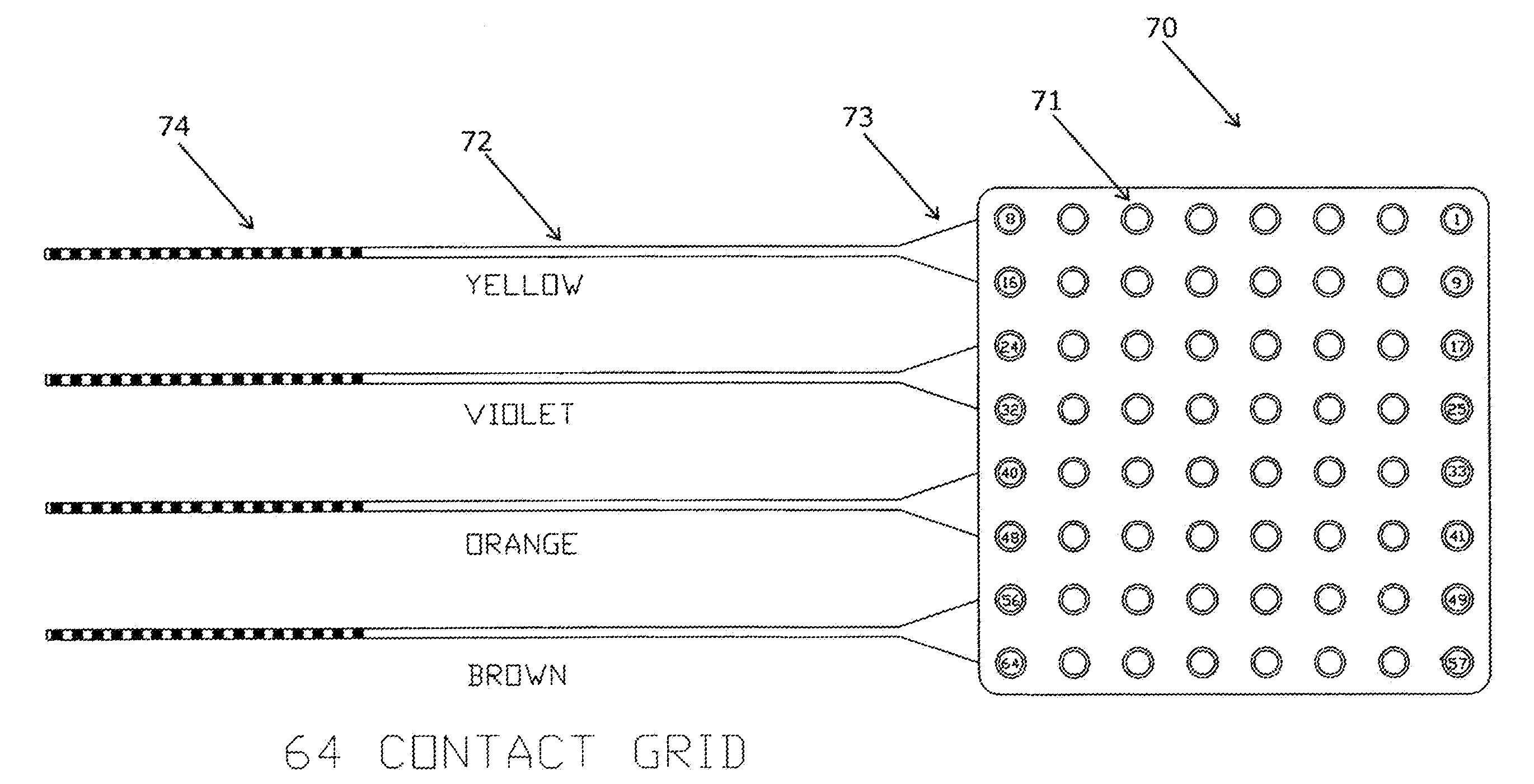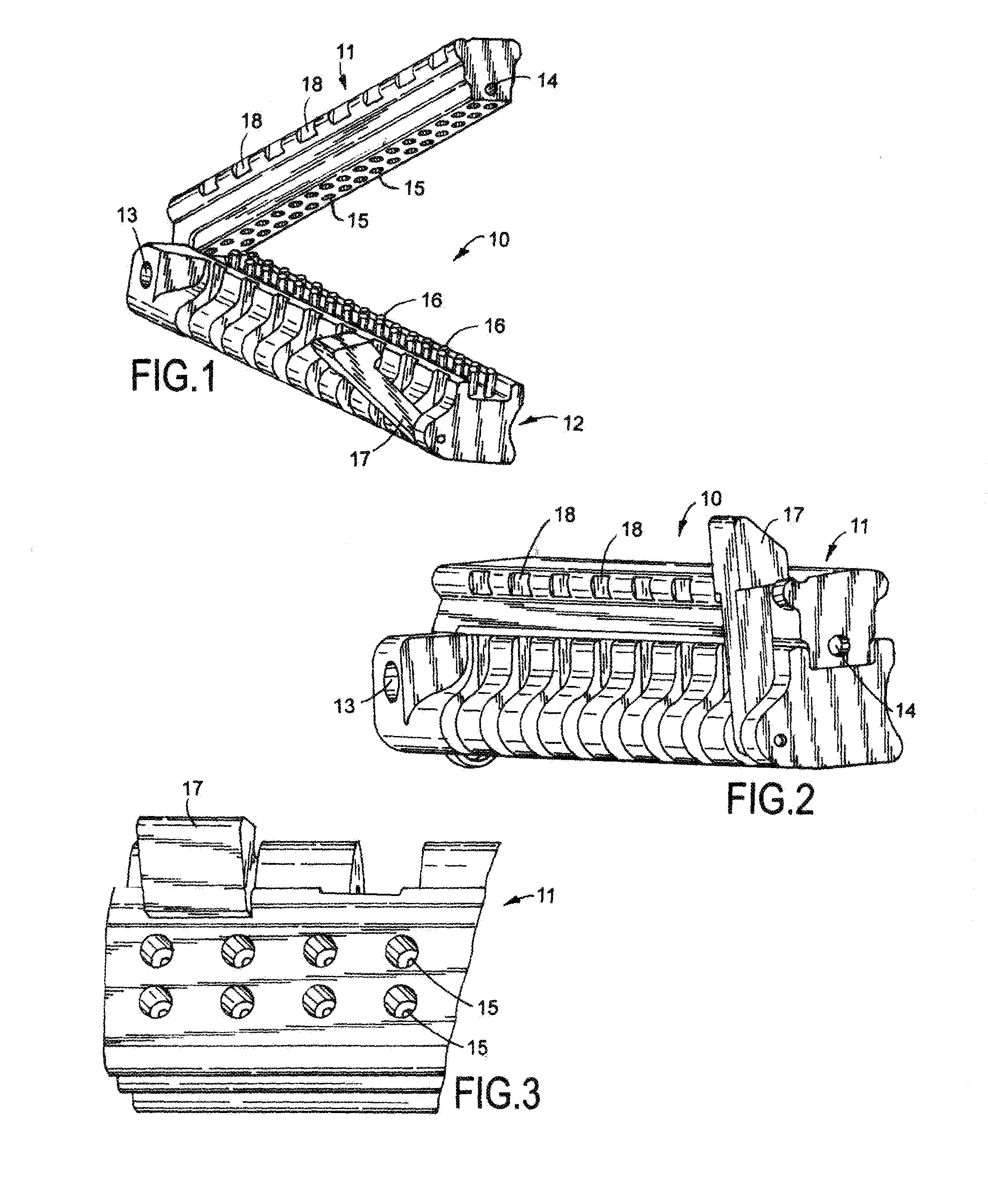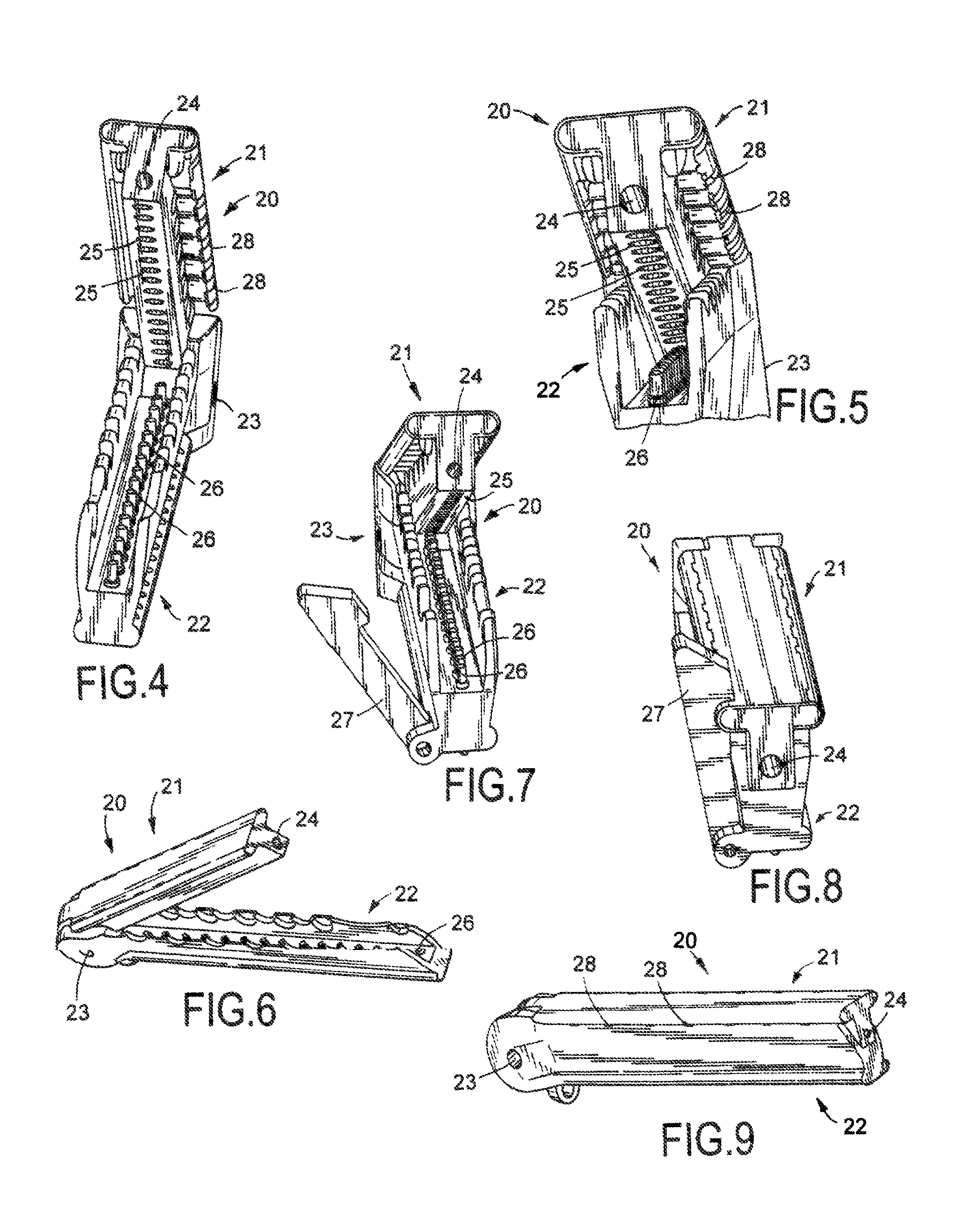Electrode for recording and stimulation
a technology of electrodes and electrode assemblies, applied in the direction of coupling device connections, therapy, applications, etc., to achieve the effects of reducing adhesion to smooth and wet surfaces, enhancing surface electrodes, and increasing malleability for conformance to surface features
- Summary
- Abstract
- Description
- Claims
- Application Information
AI Technical Summary
Benefits of technology
Problems solved by technology
Method used
Image
Examples
embodiment 10
[0039]Referring to FIGS. 1-3, the connector assembly embodiment 10 shows a hinged two-piece connector having a top member 11, and a bottom member 12. The top member rotates with respect to bottom member 12 by means of hinge 13 which is disposed perpendicular to the connector's contact pins 16 (2 rows) and positioned adjacent to the distal tip or end of the inline tail of the electrode when placed in the assembly. The contact pins 16 may be constructed of stainless steel, platinum, a platinum alloy, or of a shape memory alloy (SMA) as further discussed below.
[0040]The hinge 13 may use a dowel (not shown) that is perpendicular to the length of the inline connector structure and perpendicular to the connector pins 16 extending upwardly in the bottom body 12 of the connector assembly. The dowel may be a screw that threads into one side of the connector, a dowel with a recess for a pin, or an e-clip. The hinge 13 may also be a press fit pin that bottoms out and is sealed in or enclosed w...
embodiment 20
[0046]Referring to FIGS. 4-9, connector assembly embodiment 20 shows a hinged two-piece connector having a top body 21, a bottom body 22, and a hinge 23 disposed perpendicular to the connector's contact pins 26. The contact pins 26 are either spring-loaded pins or ball bearings, which may be formed of stainless steel, platinum, a platinum alloy, or the like. The hinge 23 having a dowel is shown positioned perpendicular to the length of the inline connector and perpendicular to the spring-loaded pins 26 disposed upwardly in the bottom portion 22 of the connector 20. The dowel may be a screw that threads into one side of the connector, a dowel with a recess for a pin, or an e-clip. The hinge 23 may be a press fit pin that bottoms out and is sealed in with another part or potted into place.
[0047]The inline connector top 21 of connector assembly 20 is shown having a single long hole or bore 24 in which the inline tail runs the length and terminates near the end of the top 21. The connec...
embodiment 30
[0053]Referring to FIGS. 10-15, connector assembly embodiment 30 is shown having a top body 31, a bottom body 32 and a hinge 33 with a dowel which is parallel to the connector pins 36 extending upwardly form the bottom body portion 32 of the connector assembly 30. The dowel may be a screw that threads into one side of the connector, a dowel with a recess for a pin, or an e-clip. The hinge 33 may be a press fit pin with bottoms out and is sealed in with another part or potted into place. The hinge 33 is spring loaded so that the two pieces 31, 32 can create vertical space between the two pieces for swinging the two pieces into a closed position. This allows for the convex and concave triangular locking mechanism 37 on the end of the connector pieces to mate together and to lock the unit into place.
[0054]The inline connector top 31 of connector assembly 30 is shown having a single long hole or bore 34 in which the inline tail runs the length and terminates near the end of the connecto...
PUM
 Login to View More
Login to View More Abstract
Description
Claims
Application Information
 Login to View More
Login to View More - R&D
- Intellectual Property
- Life Sciences
- Materials
- Tech Scout
- Unparalleled Data Quality
- Higher Quality Content
- 60% Fewer Hallucinations
Browse by: Latest US Patents, China's latest patents, Technical Efficacy Thesaurus, Application Domain, Technology Topic, Popular Technical Reports.
© 2025 PatSnap. All rights reserved.Legal|Privacy policy|Modern Slavery Act Transparency Statement|Sitemap|About US| Contact US: help@patsnap.com



